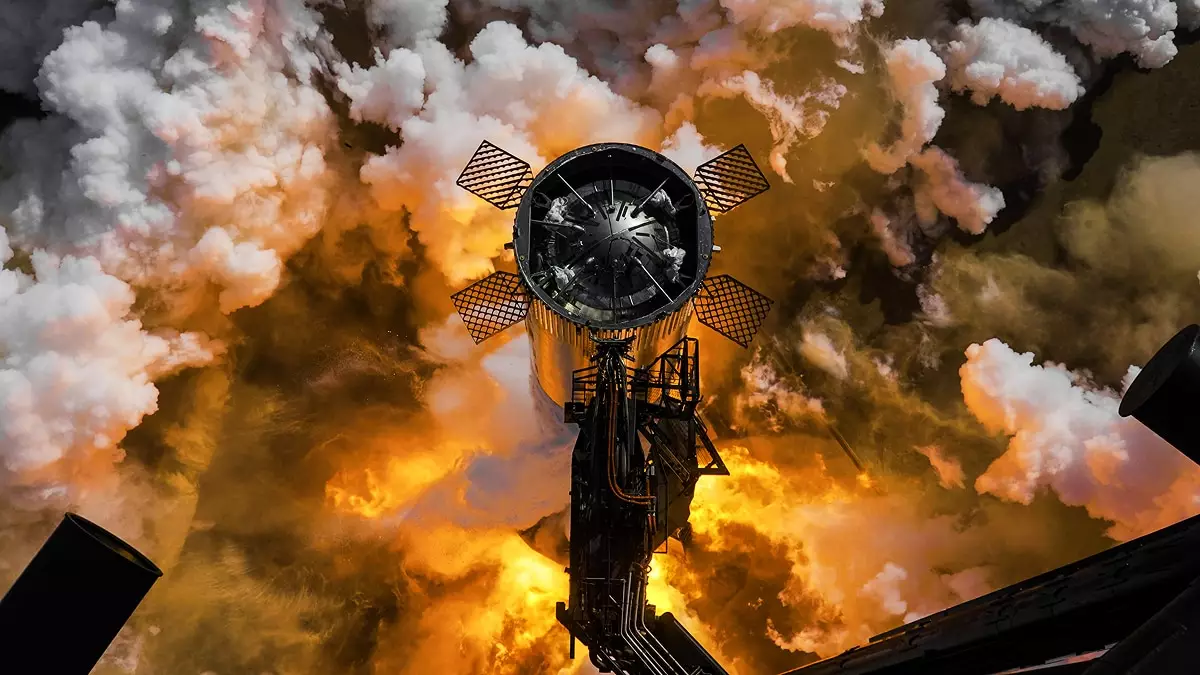SpaceX has recently achieved significant milestones in the development of its Starship launch system, conducting comprehensive static fire tests for both stages of this ambitious rocket framework. At the renowned Starbase facility in Texas, engineers effectively test-fired the Super Heavy booster—the first stage of the Starship—alongside the second stage of the Starship itself. This dual testing is a crucial advancement, reflecting the company’s ongoing commitment to perfecting its next integrated flight test, designated as IFT-8.
The Super Heavy booster was rigorously put to the test through a full-duration static fire, engaging all 33 of its Raptor engines. This exhaustive testing process simulated the high-stress conditions expected during an actual launch, enabling engineers to gather invaluable data regarding engine performance under pressure. The successful completion of this static fire is critical; validating the Super Heavy’s ability to handle anticipated launch parameters reinforces confidence as SpaceX readies itself for the next flight attempt.
In conjunction with testing the Super Heavy booster, the second stage of the Starship underwent its own rigorous examination. Engineers piloted the upper stage through varied thrust conditions that mimic real-world flight scenarios, which serves the dual purpose of refining the propulsion system and assessing the performance dynamics of the entire spacecraft. This methodical approach illustrates SpaceX’s commitment to iterative testing, ensuring that each component of Starship operates optimally before the refined assembly of both stages.
As preparations continue, the next logical phase is stacking both the Super Heavy booster and the Starship’s second stage to form the complete system. Looking ahead, the potential launch window for the highly anticipated IFT-8 is approaching, with some projections suggesting a timeline by the end of February. However, it’s essential to note that this timeline hinges upon the regulatory green light from the Federal Aviation Administration (FAA), emphasizing the vital role that federal oversight plays in the launch schedule.
Reflecting on past performances, particularly the IFT-7 test flight that launched in January 2025, brings into focus the need for enhanced design and operational protocols. While the booster experienced success with its robotic catching mechanism post-launch, the loss of communication with the upper stage highlights areas for improvement. Debris sightings over the Caribbean following an apparent in-flight breakup illustrate the unpredictable nature of such complex missions. Therefore, upcoming tests will not only focus on improving flight stability but also enhancing the controlled descent mechanisms for returning stages.
Looking beyond mere testing, SpaceX intends for the Starship system to play a pivotal role in various programs, such as NASA’s Artemis initiative, which aims to facilitate manned lunar exploration. Specifically, the Starship lander is scheduled for utilization in the Artemis 3 mission, slated for 2027, underscoring the importance of thorough testing and validation. As SpaceX endeavors to complete multiple launches throughout the year, each flight will contribute to a broader understanding of reusable rocket technology—an essential component for the future of interplanetary travel and eventual human colonization of the Moon and Mars. Each successful test further legitimizes SpaceX’s place at the forefront of aerospace innovation.


Leave a Reply